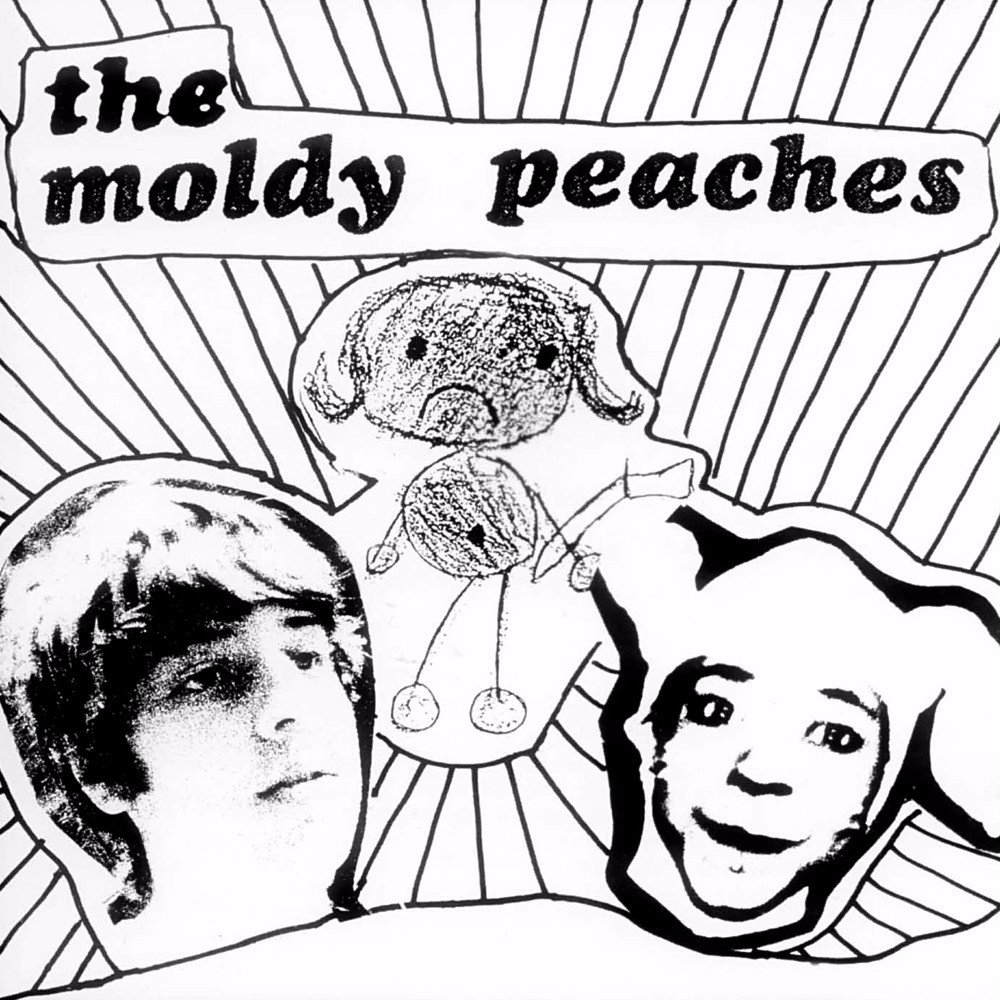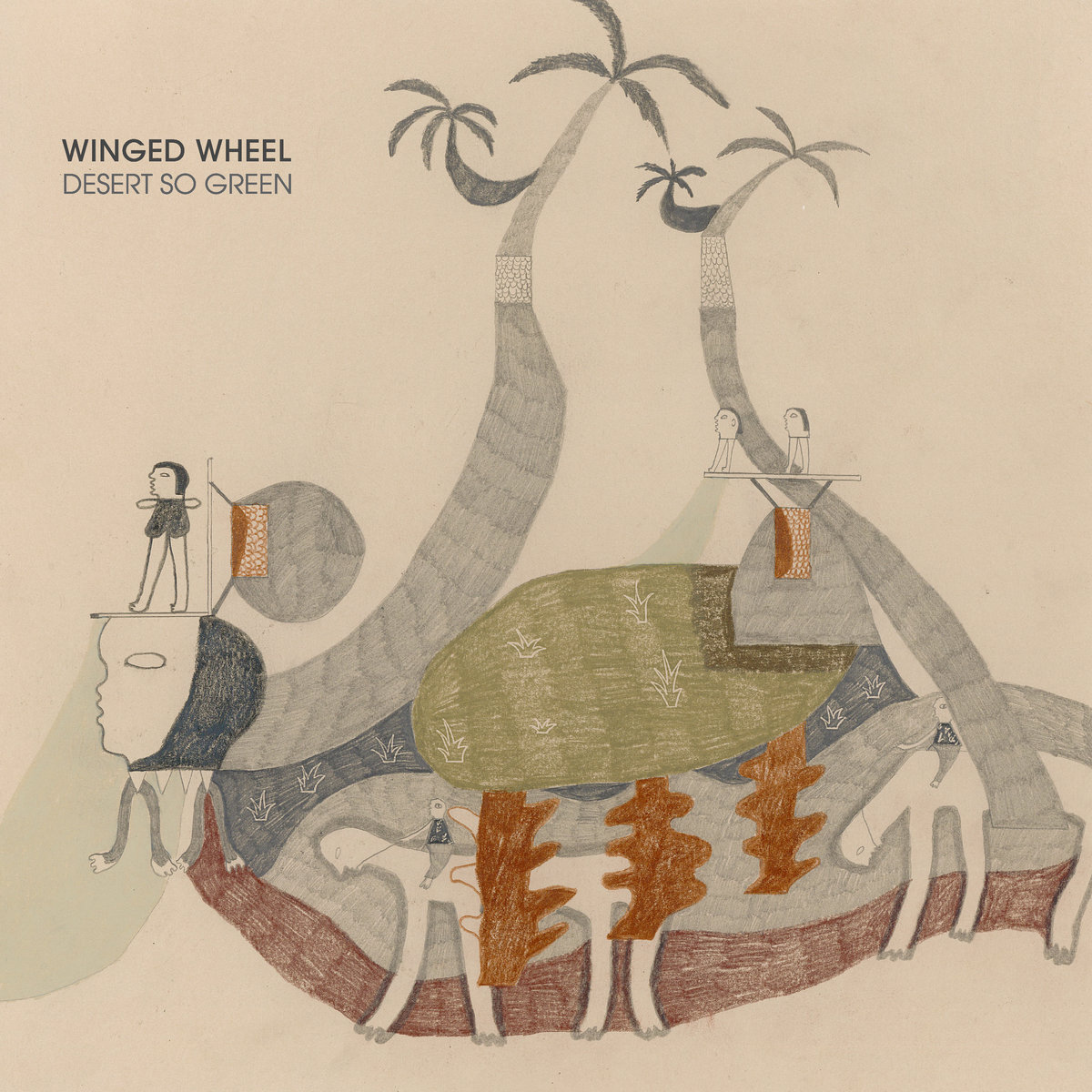- Rough Trade
- 2001
Context is everything, right?
I was perhaps an outlier among the Moldy Peaches' avid core fan demographic in 2001 in that I experienced the self-titled debut as family music. In my little blended family, we had a 12-year-old and a 4-year-old, and the record worked perfectly for them: The little one was content to holler along with the “clean” versions we created ("Who's Got The Cracker?") while our older guy was delighted to get lots of the jokes and be the one who explained to us what cheat codes are. Go ahead and judge our parenting choices if you're that type, but it felt and (and still feels) like good, clean fun.
The liner notes to The Moldy Peaches are a tongue-in-cheek and faux-mystical mess, but they begin with a simple enough rhetorical question: "For the kids?" And, I mean, Kimya Dawson -- co-leader of the band alongside Adam Green -- was living back in her home in Bedford Falls, New York when the record came out, a home that doubled as the daycare center her parents ran. This was a family record. Plenty of great records came out in 2001, but few were as appealing to sing along to as The Moldy Peaches -- Dylan's Love And Theft and Tricky's Blowback just couldn’t scratch that itch.
Speaking of Dylan, I should note that both The Moldy Peaches and Love And Theft were released in the United States not just in 2001, but on 9/11. So were a bunch of other albums that would become big hits (Nickelback's Silver Side Up), critically acclaimed milestones (the Microphones' The Glow Pt. 2), or both (Jay-Z's The Blueprint). The fact that so many culturally significant records were released on 9/11 -- it was a Tuesday, which had been new release day for years -- led to all manner of critical hyperventilating. The writer and musician Greg Tate suggested that Love And Theft had so many "prescient, portentous lyrics" that it "begs the question: What did Dylan know and when did he know it?" David Vest also posited Dylan as some kind of 9/11 prophet in a truly breathless piece published in CounterPunch. Armond White made similarly inflated claims for The Blueprint in a piece for First Of The Month.
I wrote a whole book about how 9/11 shaped popular culture in the United States, so perhaps you will trust me when I say that the critical establishment ran quite a high fever for a while after the planes hit. We were living in the "aftermath": The attacks, we were told again and again, represented a profound rupture in time and space. Among other things (and this one came from Time magazine's wise man, Roger Rosenblatt), we would never again embrace irony as a cultural stance, and we would never again want to watch disaster movies with buildings exploding and falling to the ground and suchlike. Prophetic.
The Moldy Peaches came in for a bit of scrutiny on the 9/11 front for the simple reason that it included a song called "NYC's A Graveyard" with lines about "all the tombstones skyscraping" and "all the yuppies getting buried."But the Moldy Peaches were marginal enough that they didn’t get anything like the negative attention aimed at the Coup (who had to pull the cover of their album Party Music at the last minute because it depicted Boots Riley and Pam The Funkstress blowing up the World Trade Center -- meant as a critique of capitalism and perhaps an homage to Biggie Smalls?) or the positive attention showered on Dylan and Jay-Z.
Having lived with the record for 20 years now, it strikes me as exceedingly odd how little serious attention it garnered in its moment or really at any time since. It is not hard to read The Moldy Peaches as an intensely political record. Most, but not all, of this is in the register of "small p" politics, with plenty to say about gender and power (and the barely beneath-the-surface hints about the whiteness of the scene that Kimya Dawson, an African American woman, was operating in). The whole record kicks off with a simple acoustic figure, a whack at a snare, and Dawson, then 28, intoning: "Indie boys are neurotic." She didn’t have to say "indie white boys" because that would have been redundant. Before the song ends, Dawson's musical partner Adam Green, then 20, drops another hint about their milieu -- "I'm running out of ethnic friends." On another song Dawson offered this description of the two singers' (very gendered?) ambitions: "You want more fans/ I want more stage." (By 2015 Dawson was getting much more explicit about the racialized dimensions of her career, at least on Twitter.)
The Moldy Peaches emerged from New York’s so-called antifolk scene, centered at the Sidewalk Café under the direction of open mic founder and booker Lach. Antifolk never had much of a coherent musical, identity, but it did help create space for an impressive range of oddballs ranging from Jeffrey Lewis to Regina Spektor to Lana Del Rey. I cannot make much of case that the antifolk scene was particularly consequential -- a key club, a handful of good records, no particular social or political agenda. But The Moldy Peaches remains pretty compelling for how it captures two young people -- a Black woman and her much younger Jewish co-conspirator --trying to imagine a world that they can live in. In that respect, the record’s rallying cry, if it has one, might be found in a line from “Anyone Else But You” (which would ultimately turn out to be their most famous song -- more on that in a minute): "Don Quixote was a steel driving man." What a moment! Drawing a line from world literature’s most well-known dreamer to John Henry, the steel driving man -- African American folk culture’s heroic and doomed worker -- stops me in my tracks every time I hear it.
Dreaming might not be political action per se, but it is a kind of hard work that any successful, engaged collective needs to take on. I don’t think the Moldy Peaches were any kind of conventional activists, but they sure did want us to think about how another world is possible. This whole record operates in a kind of alternative universe, one in which Dawson and Green are main characters. Sweet, raunchy, baffled, slapstick, melancholic -- together these two mapped a complex imagined world ("These nightmares…with the repeating cast..of characters.")
At the time of its release critics liked to talk about the Moldy Peaches as being eccentric and simple and childlike (Steve Lichtenstein in Stylus called them "weird little fucks"), but I never heard that. Everyone talked about the main artistic strategy of the record -- how Dawson and Green would finish each other’s lines, sing different words over each other at the same time, etc. -- but no one really talked about the point of that strategy, which was remarkably ambitious and complex. On the most obvious level, the Moldy Peaches really wanted to say a lot of things at once, as this near-quotation of Walt Whitman makes clear: "We like to contradict ourselves/ And that's alright."
This comes into starkest relief in one of the few moments on the record when the two have an explicit, capital-P politics point to make, "Steak For Chicken": "Who made all these things for killing? (somebody's making a killing)." That is a pretty direct statement in opposition to the economy of the military-industrial complex. On a record released on 9/11.
Made well before 9/11, The Moldy Peaches worked hard to remind us that we were living in a fallen world, our condition defined not by the world-historical terrorist attacks but by the everyday painful realities of living in a radically imperfect social world. "Mardi Gras came and went" is the first line of "Steak For Chicken" -- the party is over. The two distinct vocals at once underscores again and again that more than one thing can be true at the same time: life!
This emotional complexity was rarely commented upon at the time of the record’s release. The Moldy Peaches was remarkably polarizing. It got some positive press (mostly in the UK, it seems), but more than once served as the object of really intense attack. Hold on to your hat as I bring you this shocking news: Nowhere was the critical scorn more pronounced than in Pitchfork, which published a review that seems to have assumed that the two leads were a romantic couple and compared Dawson and Green derisively to Sonny and Cher. Nathan Rooney's piece is full of undigested and vague historical arguments that don’t really make much sense, but its main point is to pathologize Dawson (with her "bipolar…confusion") and Green. They don't have much to offer, Rooney thinks, but as manifestly marginal social figures they might be good "friends for our damaged inner child." Two years later, their truly brutal review of Moldy Peaches 2000 keyed around the idea that the Peaches "radiate a stunted, abused-kid vulnerability." Good job separating out person and persona, Michael Idov!
The Moldy Peaches was a remarkably sophisticated record -- full of sly intertextual lyrical and musical references and plenty to say about the personal, economic, and social challenges of living in the modern world. It is stuffed to the gills with words ("I opened my mouth and I tried and I tried," Dawson sings) that again and again return to the question of how to invent yourself in a culture that does not necessarily want you to step outside the narrow spaces you are supposed to occupy. It is an art record and a political record and a family record, as long as you understand "family" to mean the people you choose to make a world with.I have to admit that the original Pitchfork reviewer had good reason to imagine that Moldy Peaches would turn out to be "one of those unexplained groups that disappear as soon as they’ve arrived and cascade through the years as a cult favorite."
But you know what happened.
Juno is what happened.
Released late in 2007 to accompany the Diablo Cody-scripted/Jason Reitman film, the Juno soundtrack featured lots of Kimya Dawson music and Moldy Peaches' "Anyone Else But You" -- which main characters Juno MacGuff and Paulie Bleeker sing to each other in the final scene. The digital album briefly hit #1 on the Billboard charts and ultimately went platinum, selling over a million copies. Dawson and Green have each continued to make music in various configurations (perhaps most notably, in Dawson’s case, as half of the Uncluded with rapper Aesop Rock) but the real headline is that the latter-day success of their song means that we get to go back and listen to Moldy Peaches with the knowledge that Kimya Dawson and Adam Green did indeed invent a world in which they ended up becoming main characters.






